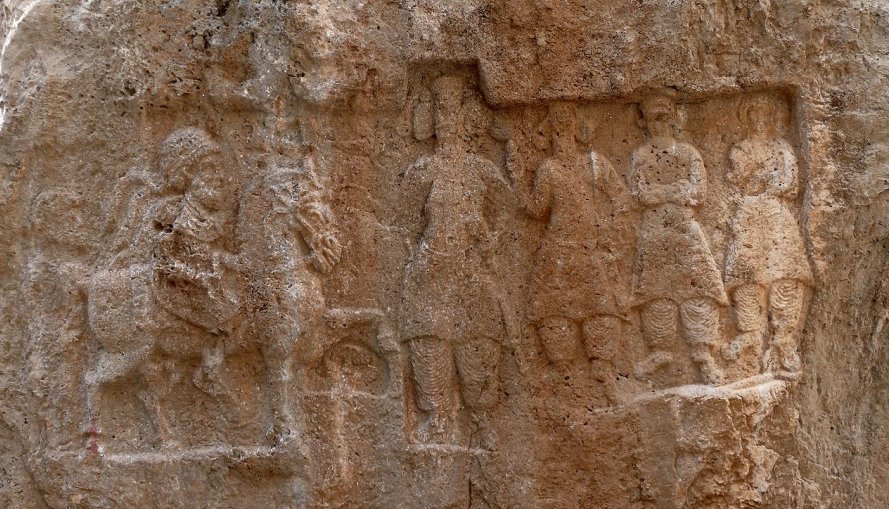Parthians: Their Great Empire And Skilled Horse Archers
MessageToEagle.com – The Parthian people established an empire that lasted almost 500 years, from the mid-3rd century BC until 224 CE. Their empire was the most lasting of the empires of the ancient Near East.
They came to power under king Mithradates the Great (171-138 BC); their territories stretched from the Euphrates River in the west to Central Asia and the borders of Bactria in the east. The Parthian empire occupied Iraq, Armenia, all of modern Iran, parts of Turkey, Georgia, Azerbaijan, Turkmenistan, Afghanistan and Tajikistan, and for short time, also territories in Pakistan, Syria, Lebanon, Israel and Palestine.
Strangely, despite their enormous role in forming a strong link between the peoples of East Asia and Europe – the Parthians were overshadowed by the Achaemenids and Sassanids.

The Parthians were originally part of a tribe known as the Parni (or Aparni), who originated on the eastern edge of the Caspian Sea. We know about their history but only from Greek and Roman sources, which mainly describe the Roman battles with the Parthians and their excellent warfare.
The Parthians were literate people but unfortunately, they did not record histories of their dynasty.
Excavations revealed that they built temples, monuments, tombs and Parthian coins, which they made for the reigns of their kings and this procedure – although, rather unusual in Antiquity – functioned very well.
Their religion was an early form of Zoroastrianism, but they were also tolerant of other religious beliefs.

Their most famous towns such as Ctesiphon, Seleucia, Ecbatana, Rhagae, Hecatompylus, Nisâ, and Susa flourished.The first king of the Parthians was Tiridates’ brother Arsaces I. His capital was Hecatompylus, the capital of the Parthian Arsacid dynasty by 200 BC.
The Parthians, like their neighbors, the Scythians, were able to succeed in battle often due to their use of horse archers. Ancient Parthians were brave and extremely skilled archers mounted on light horses. While pretending to flee at a full gallop in panic, they turned their bodies back to shoot at the pursuing enemy. It was their strategy – to confuse the enemy by pretending to be in retreat – and then, attack.

From this ancient Parthian strategy originates the term “Parthian shot” that symbolizes perfection and deadly accuracy. Now it is known as “parting shot”.
The key to their many victories was the crucial role of Parthian archers.
The Roman-Parthian wars lasted so long because the Parthians were hard to defeat. The Romans relied on heavy infantry; the Parthian armies contained two types of cavalry: the heavy-armed and armored cataphracts and light brigades of mounted archers.
Written by – A. Sutherland – MessageToEagle.com Senior Staff Writer
Copyright © MessageToeagle.com All rights reserved. This material may not be published, broadcast, rewritten or redistributed in whole or part without the express written permission of MessageToeagle.com
Expand for referencesRelated Posts
-
 Colossus Of Standing Falcon-Headed God Horus Unearthed In Egypt’s Luxor
No Comments | Jan 7, 2020
Colossus Of Standing Falcon-Headed God Horus Unearthed In Egypt’s Luxor
No Comments | Jan 7, 2020 -
 Remarkable Neanderthal Flute Found In Divje Babe Cave Is The World’s Oldest Musical Instrument
No Comments | Feb 6, 2024
Remarkable Neanderthal Flute Found In Divje Babe Cave Is The World’s Oldest Musical Instrument
No Comments | Feb 6, 2024 -
 What Would The Fifth Dimension Look Like?
No Comments | Jul 8, 2019
What Would The Fifth Dimension Look Like?
No Comments | Jul 8, 2019 -
 Unique Viking Age Silver Treasure Found On Farm Near Stockholm In Sweden
No Comments | Nov 12, 2020
Unique Viking Age Silver Treasure Found On Farm Near Stockholm In Sweden
No Comments | Nov 12, 2020 -
 Mysterious Prehistoric Statues In Bada Valley, Indonesia
No Comments | Jul 14, 2015
Mysterious Prehistoric Statues In Bada Valley, Indonesia
No Comments | Jul 14, 2015 -
 Mysterious Ancient Giant Jars Made By An Unknown Civilization Discovered In India
No Comments | Apr 1, 2022
Mysterious Ancient Giant Jars Made By An Unknown Civilization Discovered In India
No Comments | Apr 1, 2022 -
 Mysterious Bronze Age Viksö Helmets With Horns Related To Myths, Holy Animals And Divine Power
No Comments | Sep 8, 2016
Mysterious Bronze Age Viksö Helmets With Horns Related To Myths, Holy Animals And Divine Power
No Comments | Sep 8, 2016 -
 Earth’s First Animals Had Particular Taste In Real Estate
No Comments | May 16, 2023
Earth’s First Animals Had Particular Taste In Real Estate
No Comments | May 16, 2023 -
 Secrets Of The Scarab – Ancient Sacred Symbol In Human History
No Comments | Jun 14, 2015
Secrets Of The Scarab – Ancient Sacred Symbol In Human History
No Comments | Jun 14, 2015 -
 Why Were The Jews Exiled To Babylon?
No Comments | Jan 15, 2020
Why Were The Jews Exiled To Babylon?
No Comments | Jan 15, 2020

